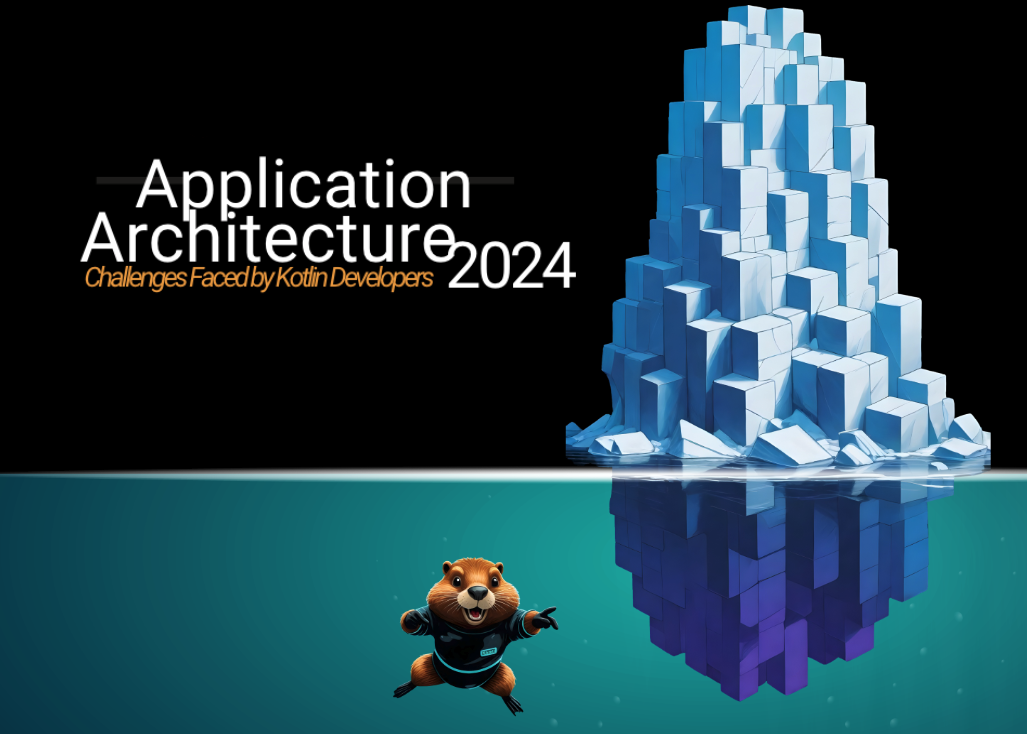22.8% of Kotlin developers face growing pains with expanding codebases our survey reveals.
The Culprit :Technical Debt Undermines Kotlin Application Development

There's a noticeable gap between the theoretical best practices in application architecture and their real-world application.
This disparity has not only been a topic of intense discussion but has also posed substantial challenges for Kotlin tech leads and their teams, who strive to create applications that captivate and engage users.
Recognizing the need to delve deeper into these challenges, we decided to embark on a bit of an exploratory journey within the Kotlin community to uncover the architectural hurdles faced by developers daily, and more importantly, to identify potential solutions.
Unveiling Application Architecture Challenges Faced by Kotlin Developers
Our investigative journey has culminated in a comprehensive report, aptly named "Application Architecture Challenges Faced by Kotlin Developers in 2024."
This report shines a light on the common architecture-related obstacles encountered in the application development process, aiming to spark dialogue, inspire innovative solutions to architectural quandaries, and advocate for a renewed commitment to sustainable and efficient development practices.
Our ultimate goal is to empower the Kotlin community to create applications that are not only technically robust but also flexible and long-lasting.
Who Did We Speak To?
We spoke to 138 Kotlin devs, a diverse group from all over the world, ranging from seasoned tech leads to newcomers, each offering a unique perspective based on their experience and area of application development with Kotlin.

The insights garnered from this diverse cohort underscore the widespread desire for better architectural support tools and practices within the community.
Be among the first to receive our comprehensive report on the application architecture challenges faced by Kotlin developers.
Technical Debt Takes the Lead
The repercussions of poor architectural decisions are severe, leading to technical debt, convoluted codebases, and an abundance of bugs. These issues complicate the maintenance and extension of applications, significantly hampering their success, scalability, and subsequently, longevity.

The findings of our survey echo the sentiments of the Kotlin development community, highlighting technical debt as a predominant issue. The demands of maintenance often overshadow the crucial tasks of shipping new features and architecting, leading to escalating application complexities and increasingly unmanageable applications.
Moreover, there is a notable deficiency in adequate tools for overseeing architecture, exacerbating the situation.
These 'revelations' are not shocking but serve as a stark reminder of the current state of affairs. They underscore the necessity for tech leads, developers, architects, and the broader Kotlin community to confront these architectural challenges head-on.
The Need for Visibility
Despite recognizing the need for visualizing their architecture, developers are thwarted by the absence of an architecture observability solution. Current tools, adept at managing code quality, fail to adequately address architectural quality.
The lack of preemptive insights to prevent issues before they worsen, coupled with inconsistencies in code refactoring processes within teams, further complicates matters. Refactoring is essential for maintaining architectural integrity, eliminating technical debt, and ensuring adherence to architectural principles and patterns.
And Proactive Solutions
To combat these challenges, Kotlin developers have put forth several pragmatic solutions. They advocate for real-time visibility into their architecture to enable proactive issue identification and resolution.

They also seek detailed issue analysis to preemptively tackle problems before they turn into crises, hoping to usher in a new era of more stability and innovation in Kotlin development. Prioritizing issues strategically is also seen as crucial for effective planning.
A Collective Step Forward
This report serves as a wake-up call for the Kotlin community to address the architectural challenges that hinder the development of robust, adaptable, and enduring Android applications. By fostering discussions and embracing innovative solutions, we can enhance the quality of Android applications, ensuring Kotlin's potential is fully realized.
And for you, what's the solution?



